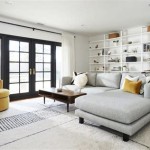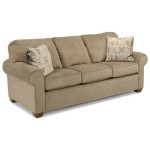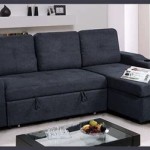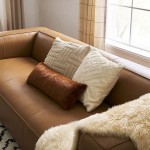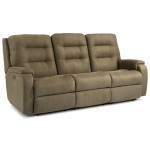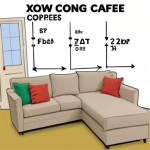Optimizing Side Table Height Relative to Sofa Arm Height
The strategic placement of a side table beside a sofa significantly enhances the functionality and aesthetic appeal of a living space. A critical consideration in this placement is the height relationship between the side table's surface and the sofa arm. An inappropriately sized side table can lead to inconvenience, awkward reach angles, and an overall disjointed visual presentation. This article will explore the optimal height relationship between a side table and a sofa arm, examining key factors influencing this decision and providing practical guidance for achieving an ideal ergonomic and aesthetic balance.
Understanding the Ergonomic Imperative
Ergonomics, the science of designing and arranging things people use so that the people and things interact most efficiently and safely, plays a crucial role in selecting the right side table height. The primary function of a side table is to provide a convenient surface for placing items such as beverages, remote controls, books, or electronic devices. If the side table is too low, users will be forced to lean down excessively, straining their back and neck to reach their desired items. Conversely, if the table is too high, reaching the items can feel awkward and cumbersome, potentially leading to spills or items being knocked over. Therefore, achieving an ergonomically sound height is paramount for promoting comfort and convenience.
The general principle is that the side table surface should be at approximately the same height as the sofa arm, or slightly lower. This allows users to easily access items without significant bending or stretching. A height differential of a few inches, either higher or lower, may be acceptable depending on individual preferences and the specific use case. For example, a side table used primarily for holding beverages might benefit from being slightly lower to minimize the risk of accidental spills. However, a table used for writing or working remotely might be more comfortable if positioned at the same height as the sofa arm or slightly above, mimicking the functionality of a desk surface.
Consideration should also be given to the user's physical capabilities. Individuals with mobility limitations or back problems may require a higher side table for easier access. This should be evaluated on a case-by-case basis, focusing on individual needs and comfort levels. Additionally, the depth of the sofa seat and the angle of the sofa backrest can influence the optimal height of the side table. A deeper seat may necessitate a slightly higher table to compensate for the increased distance between the user and the table surface.
The Role of Aesthetic Harmony
Beyond functionality, the side table's height significantly impacts the overall aesthetic harmony of the living space. The relationship between the side table and the sofa contributes to the visual balance and symmetry of the arrangement. A side table that is disproportionately sized can disrupt this balance, making the space feel visually disjointed and less appealing. Choosing a side table with a height that complements the sofa’s height and design is crucial for creating a cohesive and visually pleasing environment.
When the side table’s height is closely aligned with the sofa arm’s height, it creates a sense of visual continuity. This alignment can be further enhanced by selecting side tables with designs that complement the sofa's style. For instance, a modern sofa with clean lines might pair well with a minimalist side table featuring similar design elements. Conversely, a more traditional sofa with ornate details might be complemented by a side table with a classic or vintage aesthetic. The unifying thread between the two pieces of furniture should be visual harmony, achieved through color, material, and design compatibility.
However, visual interest can also be created by intentionally deviating from perfect height alignment. A slightly taller or shorter side table can add a layer of visual dynamism to the space, provided that the height difference is not so extreme as to appear awkward. Consider using decorative items on the side table, such as lamps or vases, to bridge the gap between the two pieces of furniture and create a more balanced visual composition. Experimentation with different height combinations and decorative accessories is often necessary to achieve the desired aesthetic effect.
The material of the side table also plays a role in its visual impact. A side table crafted from transparent materials, such as glass or acrylic, can create a more open and airy feel, especially in smaller living spaces. Conversely, a side table made from solid wood or metal can add a sense of weight and groundedness to the arrangement. The choice of material should be aligned with the overall design aesthetic of the room and the desired visual impact.
Practical Considerations for Measurement and Selection
Accurate measurement is essential for selecting a side table with the optimal height. Before making a purchase, carefully measure the height of the sofa arm from the floor. This measurement will serve as the baseline for determining the ideal side table height. It is important to measure the sofa arm at multiple points, as the height may vary slightly due to the design or construction of the sofa. Taking an average of these measurements will provide a more accurate representation of the sofa arm's overall height.
When browsing for side tables, pay close attention to the product specifications and dimensions. Most retailers will provide detailed measurements of their furniture items, including the height, width, and depth. Compare the height of the side table to the measured height of the sofa arm to ensure a close match. Remember that a slight variance of a few inches, either higher or lower, is often acceptable. However, avoid selecting side tables with heights that are significantly different from the sofa arm height, as this can lead to ergonomic and aesthetic issues.
Consider the functionality of the side table when making your selection. If the table will be primarily used for holding beverages, a lower height may be preferred to minimize the risk of spills. Conversely, if the table will be used for writing or working remotely, a higher height may be more comfortable. Think about how the table will be used on a daily basis and choose a height that best accommodates those activities. If unsure, it's often wise to err on the side of a slightly lower table, as this is generally more forgiving ergonomically than a table that is too high.
Online retailers often offer the convenience of filtering products by height, making it easier to find side tables that meet your specific measurement requirements. However, it is always advisable to read customer reviews and check the return policy before making a purchase. Customer reviews can provide valuable insights into the actual height and quality of the product, while a flexible return policy allows you to return the table if it does not meet your expectations once you've received it.
In some cases, customizing the height of a side table may be necessary to achieve the perfect fit. This can be accomplished by adding or removing legs, or by using risers or platforms to adjust the table's height. Customization options may be limited depending on the design and construction of the table, but it can be a viable solution for achieving the desired height relationship.
When making a selection, it’s also worth considering the existing furniture style of the room. The height and design of the side table should complement the existing aesthetic to create a cohesive look. For example, in a room with high ceilings and tall furniture, a slightly taller side table might be more appropriate. Conversely, in a room with low ceilings and smaller furniture, a lower side table might be a better fit. Consider the overall proportions of the room and choose a side table that is visually balanced within that context.
Ultimately, the optimal height relationship between a side table and a sofa arm is a matter of personal preference, balanced with ergonomic and aesthetic considerations. By carefully measuring the sofa arm height, considering the intended use of the side table, and paying attention to the overall design aesthetic of the room, it is possible to select a side table that enhances both the functionality and visual appeal of the living space.

End Table Heights

End Table Heights

End Table Height How Tall Should Your Side Be Bedroom Tables

Classic And Affordable Lamp End Table Pairings Laurel Home

How To Pick The Right End Tables For Your Sofa

How To Pick The Right End Tables For Your Sofa

How To Pick The Right End Tables For Your Sofa

What Is The Difference Between A Console Table And Side Living Spaces

Side Table For Couch Arm Sofa Chair Rest
How Tall Should End Tables Be Next To A Sofa Quora

